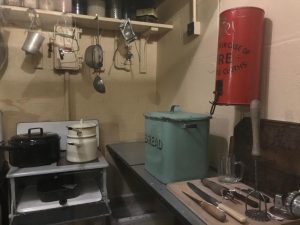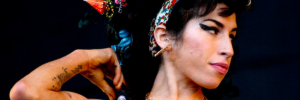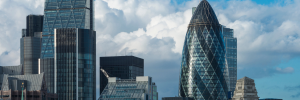The Cave of the Golden Calf, initially dubbed as The Cabaret Theatre Club, was a thrilling junction where cutting-edge art, revolutionary notions, and unconventional lifestyles amalgamated. This mesmerizing fusion established the club as a critical epicentre of England’s burgeoning modernist movement.
Frida Strindberg

The animated atmosphere of the club was attributed to Frida Strindberg, better known as Frieda Uhl. As the former wife of the esteemed Swedish playwright August Strindberg, Frida was a fervent advocate of the arts and a leading figure in London’s intellectual community. Her passion for bohemianism was instrumental in the birth of The Cave of the Golden Calf, which opened its doors on June 26, 1912.
Nestled in 9 Heddon Street, just off the vivacious Regent Street in London’s dynamic theatre district, the club adopted an unconventional name inspired by the Biblical account of the golden calf – an idol venerated by the Israelites during Moses’ absence, emblematic of decadence and defiance of established norms.
Frida Strindberg meticulously cultivated the club into a cradle of creativity and non-conformity, promoting a culture of uninhibited expression through varied performances including avant-garde theatre, cabaret, and poetry recitations. The venue, decorated by British artist Spencer Gore, was a favoured gathering place for the era’s artists, writers, and intellectuals, including the likes of Wyndham Lewis, Augustus John, and Katherine Mansfield.
The End of an Era
Unfortunately, The Cave of the Golden Calf was short-lived. Its uninhibited spirit and Frida’s lack of business management led to financial hardships, and by 1914, barely two years after its establishment, it had to shut down.
Nevertheless, in its brief existence, The Cave of the Golden Calf left a profound imprint on London’s cultural fabric. It is often hailed as the harbinger of future radical art movements, notably the Vorticist group helmed by Wyndham Lewis that emerged in its aftermath. The club’s pioneering spirit and broad-minded stance towards art and culture were path-breaking and laid the groundwork for London’s eventual recognition as a hub of innovation and forward-thinking.
In essence, The Cave of the Golden Calf was a fleeting yet radiant celestial body in the early 20th-century London cultural cosmos, mirroring a world on the brink of modernism, where norms were contested, boundaries stretched, and the trajectory of art history irreversibly shifted.
The Art Scene
On the testament of The Times, an initial team of Austin Harrison, Spencer Gore, and Leon Daviel were the dynamic force behind what was celebrated as the “first English Artists’ Cabaret”. Every evening, starting at 8.30 pm, the patrons could relish a kaleidoscope of performances running from 9 pm until 11.30 pm. The inaugural night was a spectacle in itself, boasting performances inspired by Goya’s ‘Caprichos’, Morris dances, and scenes from a Breton ‘Wake’. Audiences were treated to the melodious voices of Spanish gypsies performing traditional lore and songs reminiscent of the eras of Charles II and the Georges. The evening was further enriched by performances featuring the works of eminent artists like Bantock, Delius, Lapara, Fried, Mistral, and Moret, among others.
The gala of the opening night also included performances like songs by Norwegian singer Bokken Larsson, a portrayal of the club by a mythical ‘Cook’s Man’, whimsical piano interludes by Mr Dalhousie Young, cabaret songs by M. Rienzi and M. Percy, a pair of barefoot dances by Miss Margaret Morris, and performances by Indian musicians.
The club was renowned for amalgamating avant-garde performances with historical and traditional materials, thereby nurturing a uniquely diverse and inclusive artistic environment. The subterranean location of the venue likely contributed to the ‘Cave’ part of its name, with some speculating that the association with prehistoric cave dwellers inspired Gore’s choice of primitive scenes for the decor.
Yet, The Times perceived the club as more of a continental construct, applauding its creativity while expressing scepticism regarding its potential success in London. Despite such doubts, the club was celebrated as a phenomenal success by Gore’s contemporaries, leading to his invitation to design decorations for a modernist house in the Ideal Home Exhibition.
Despite its initial triumph, the club succumbed to financial distress by 1914. Frida Strindberg, who had a reputation for not compensating the artists their deserved fees, was ultimately compelled to shut down the club and embark on a journey to the United States. She left behind a trail of debts and much of the club’s decorations, including Gore’s murals. The location of these artworks remains a mystery till today, though they were confirmed to be on transportable canvases, providing a possible explanation for their disappearance.
Listen to episode 111: London’s nightclubs of the interwar years



